The unusual foods Americans loved a century ago
A massive collection of historical menus at the New York Public Library has been digitised for your perusal
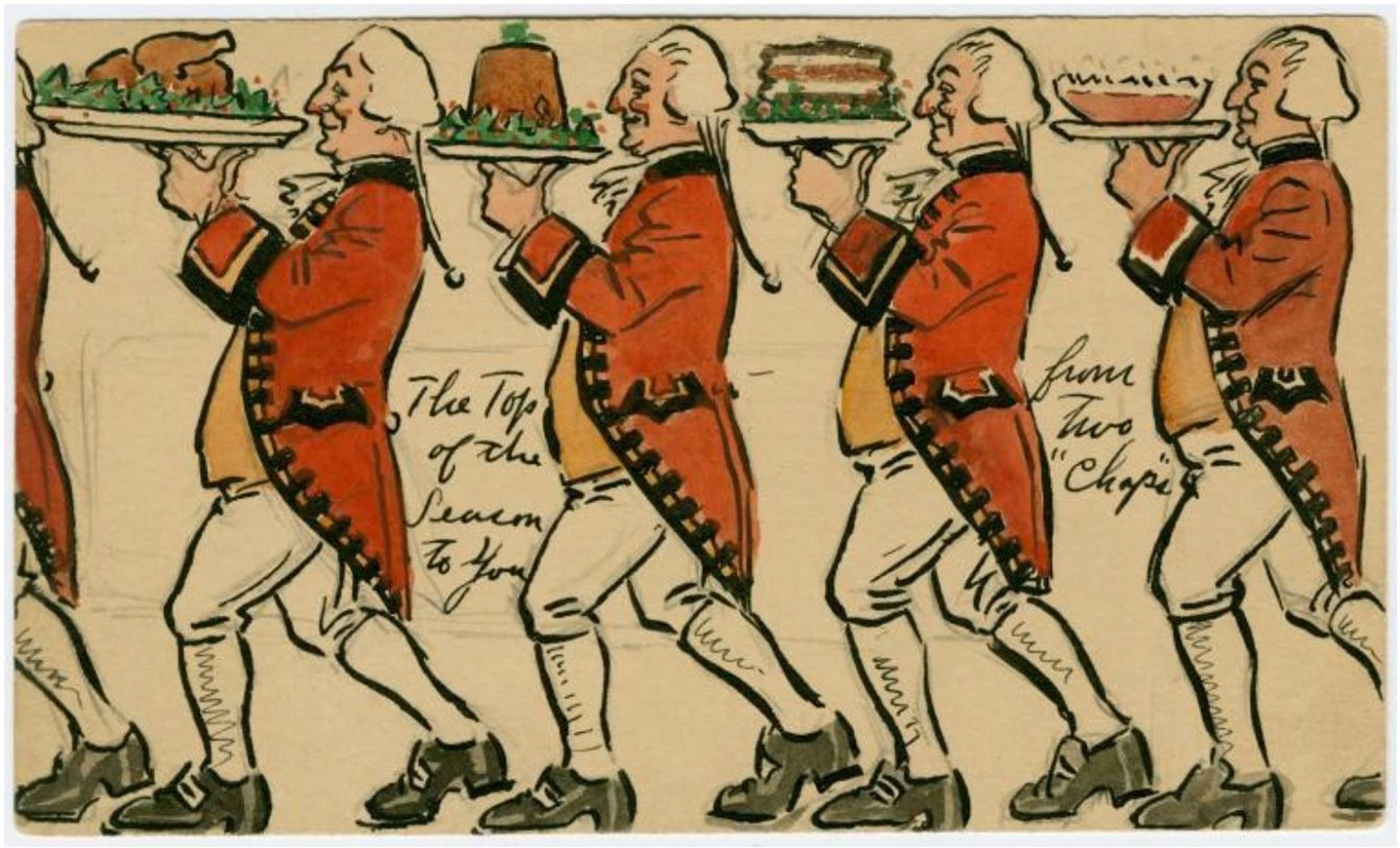
Your support helps us to tell the story
From reproductive rights to climate change to Big Tech, The Independent is on the ground when the story is developing. Whether it's investigating the financials of Elon Musk's pro-Trump PAC or producing our latest documentary, 'The A Word', which shines a light on the American women fighting for reproductive rights, we know how important it is to parse out the facts from the messaging.
At such a critical moment in US history, we need reporters on the ground. Your donation allows us to keep sending journalists to speak to both sides of the story.
The Independent is trusted by Americans across the entire political spectrum. And unlike many other quality news outlets, we choose not to lock Americans out of our reporting and analysis with paywalls. We believe quality journalism should be available to everyone, paid for by those who can afford it.
Your support makes all the difference.The last time you went to a restaurant, what did you order? A plate of celery and radishes to start, perhaps? How about a pack of cigarettes or an alligator pear salad?
These things rarely make an appearance on restaurant tables today, but not so long ago they were all common on American menus, as a massive collection of historical menus at the New York Public Library shows. After more than a century of collecting, the library has amassed more than 40,000 restaurant menus. About 18,000 of those menus, dating from 1851 to 2008, have been digitised and are available on their website.
Here's one menu from the Empire State Building observatory in 1933, which offers liverwurst sandwiches and peanut butter sandwiches for a quarter:

Click to view the menu in full size
Here's a menu from the inn near the Old Faithful geyser in Yellowstone, from 1915, which includes raw radishes, apple pie and "finger bowls served only upon request":
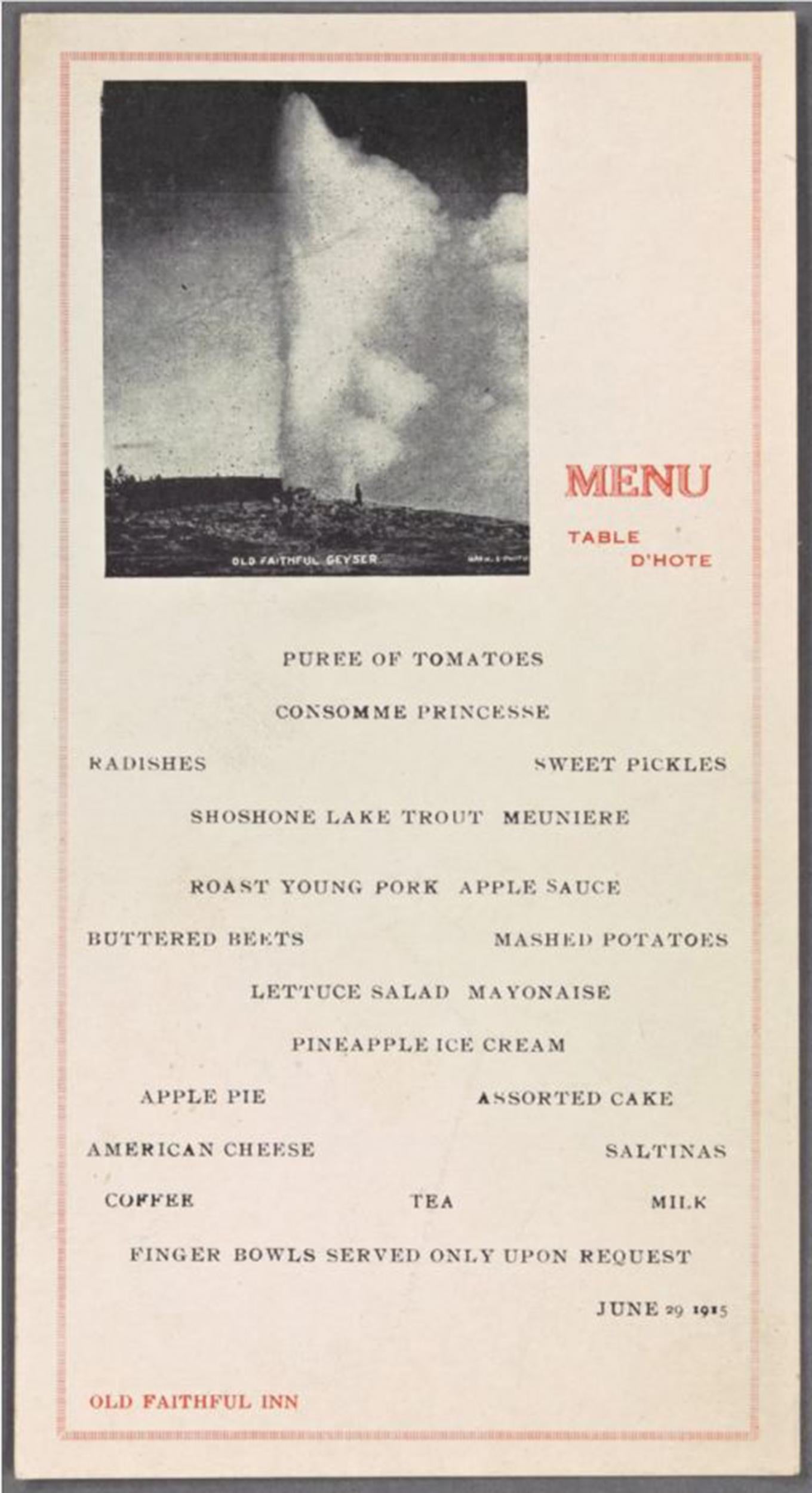
And here's one for the Grand Hotel Royale in Budapest -- the inspiration for Wes Anderson's 2014 movie, "The Grand Budapest Hotel" -- which offers fancy French dishes and Cognac:
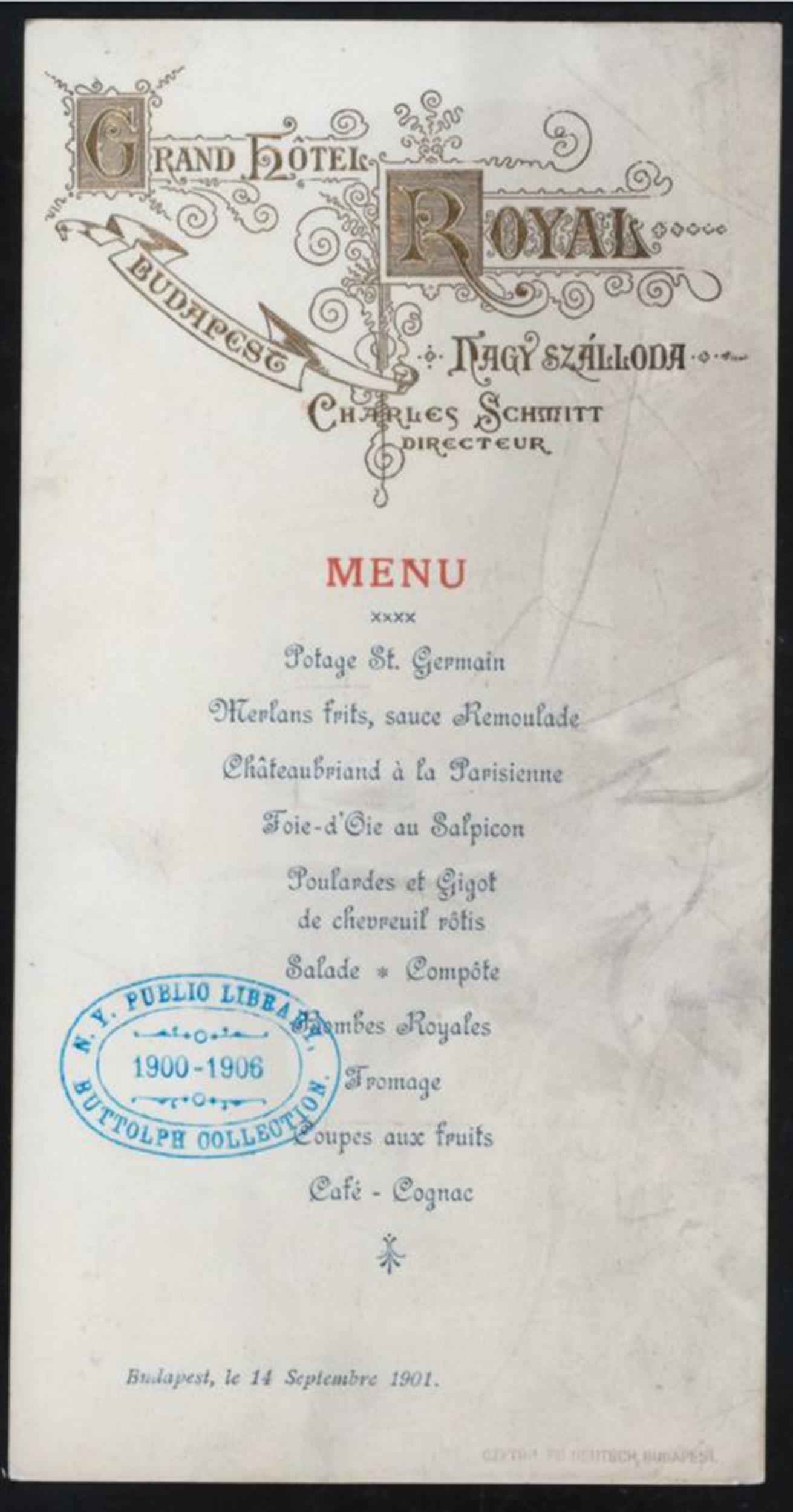
The library's menu collection offers a fascinating and surprisingly vivid snapshot of history, and how tastes have fluctuated over the decades.
One tendency that has almost totally vanished, for example, was the practice of eating plates of raw vegetables as an appetizer. For much of the 1900s, restaurant-goers would start their meal with a plate of celery, radishes and olives. “Coffee and tea are … on almost every single menu we have, but then the third most popular dish is celery,” says Rebecca Federman, the curator of the library’s menus project.
The menu below, from the Pan-American Exhibition in Buffalo, New York, in 1901 -- the same exhibition where President William McKinley was assassinated -- shows some of these now-odd dishes, like a plate of radishes or "chow chow," a pickled vegetable relish, for 15 cents, or smoked beef tongue for 40 cents.
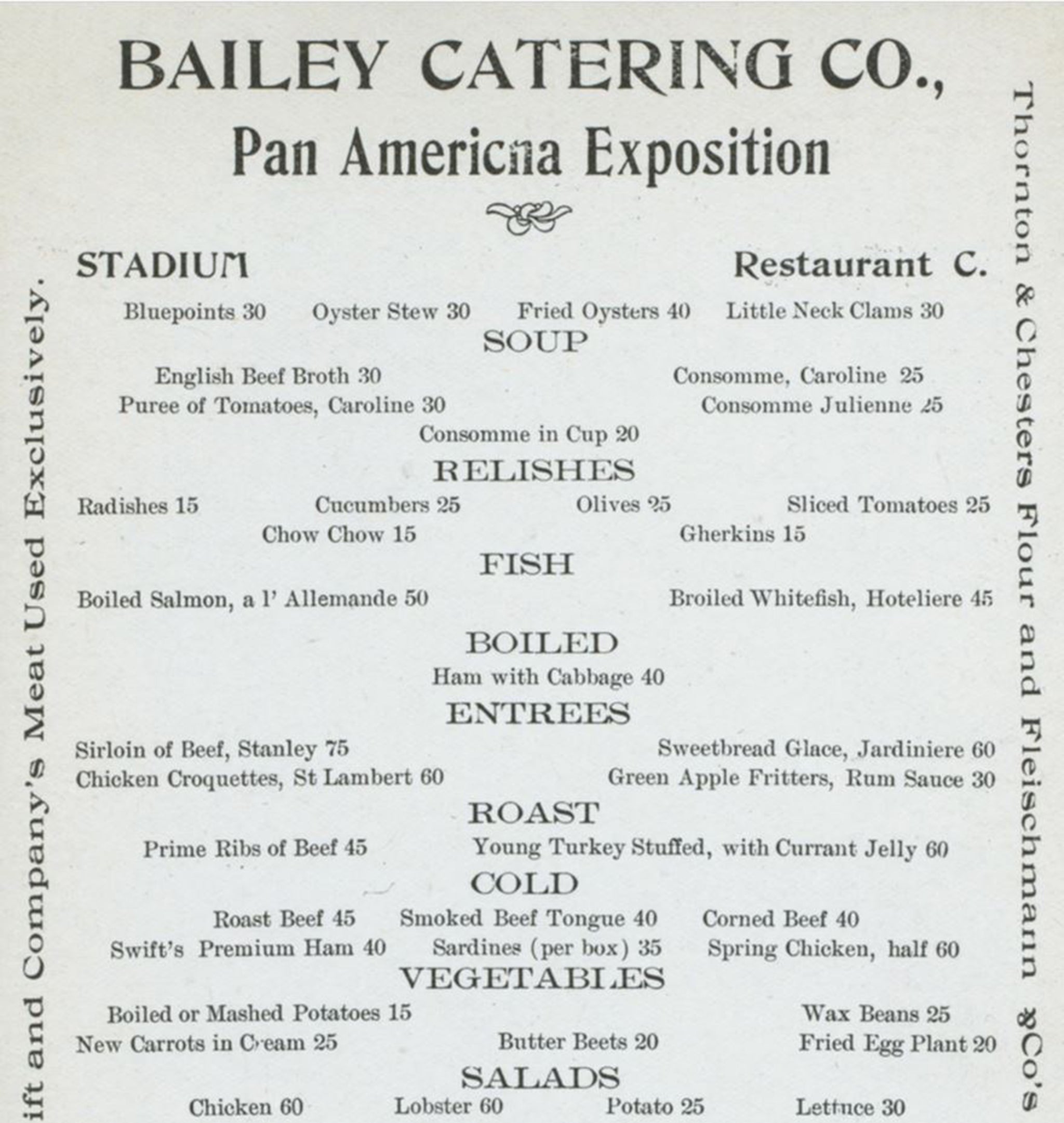
Cigarettes used to be common on restaurant menus, says Federman, as well as salads made with “alligator pear” – an old-timey name for avocados. The menus also show the huge influence of French food, which was basically what Americans and Europeans ate when they ate fancy food for much of the 20th Century.
Some of the menus are special for their beautiful artwork, like this series of menu covers from the Hotel New Yorker below, which depicted scenes from World War II -- "things that don't necessarily whet your appetite," says Federman.
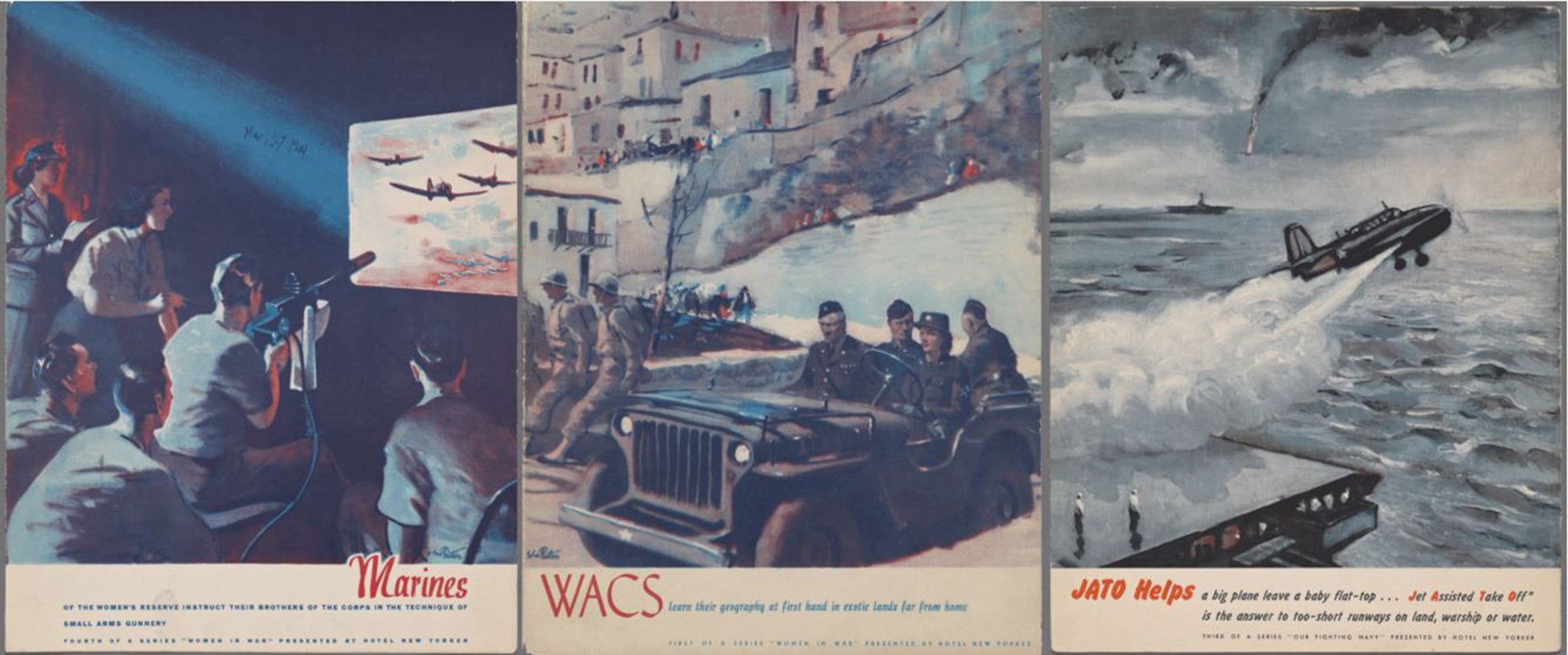
This undated menu from the Russian Tea Room, on West 57th St. in New York, offers vodka drinks that will apparently get you flying like the little man on its cover:
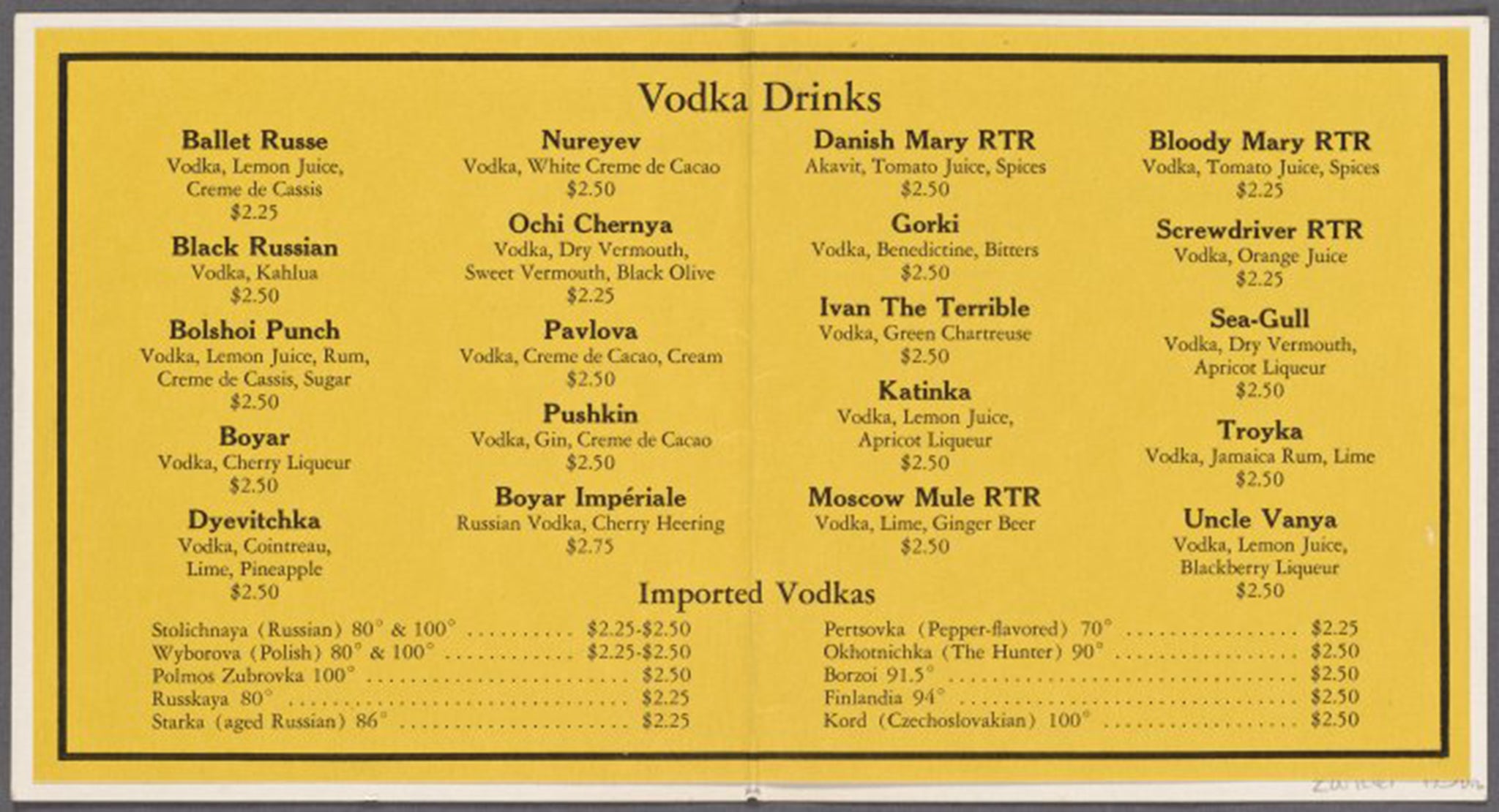
Click to view the menu in full size
Others offer a snapshot of history. In addition to the menu above, from the Pan-American exhibition where President McKinley was assassinated, the collection includes the menu from McKinley's inauguration. It also includes the menu for a meal McKinley ate in 1899 while riding the Pennsylvania Railroad, a defunct railroad that most people will know from the game Monopoly. That menu includes interesting dishes like green turtle, broiled oysters on toast, and, of course, celery.
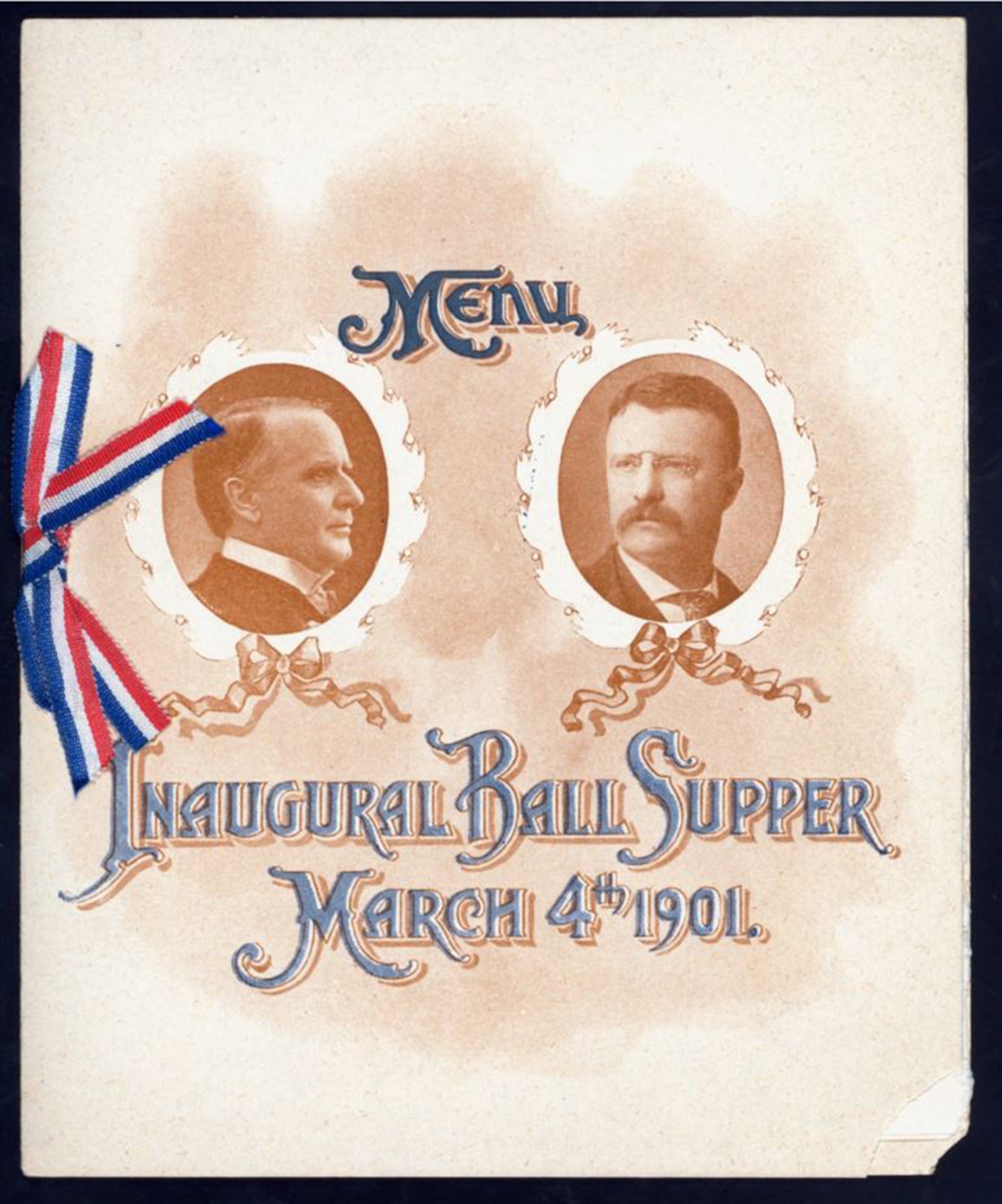
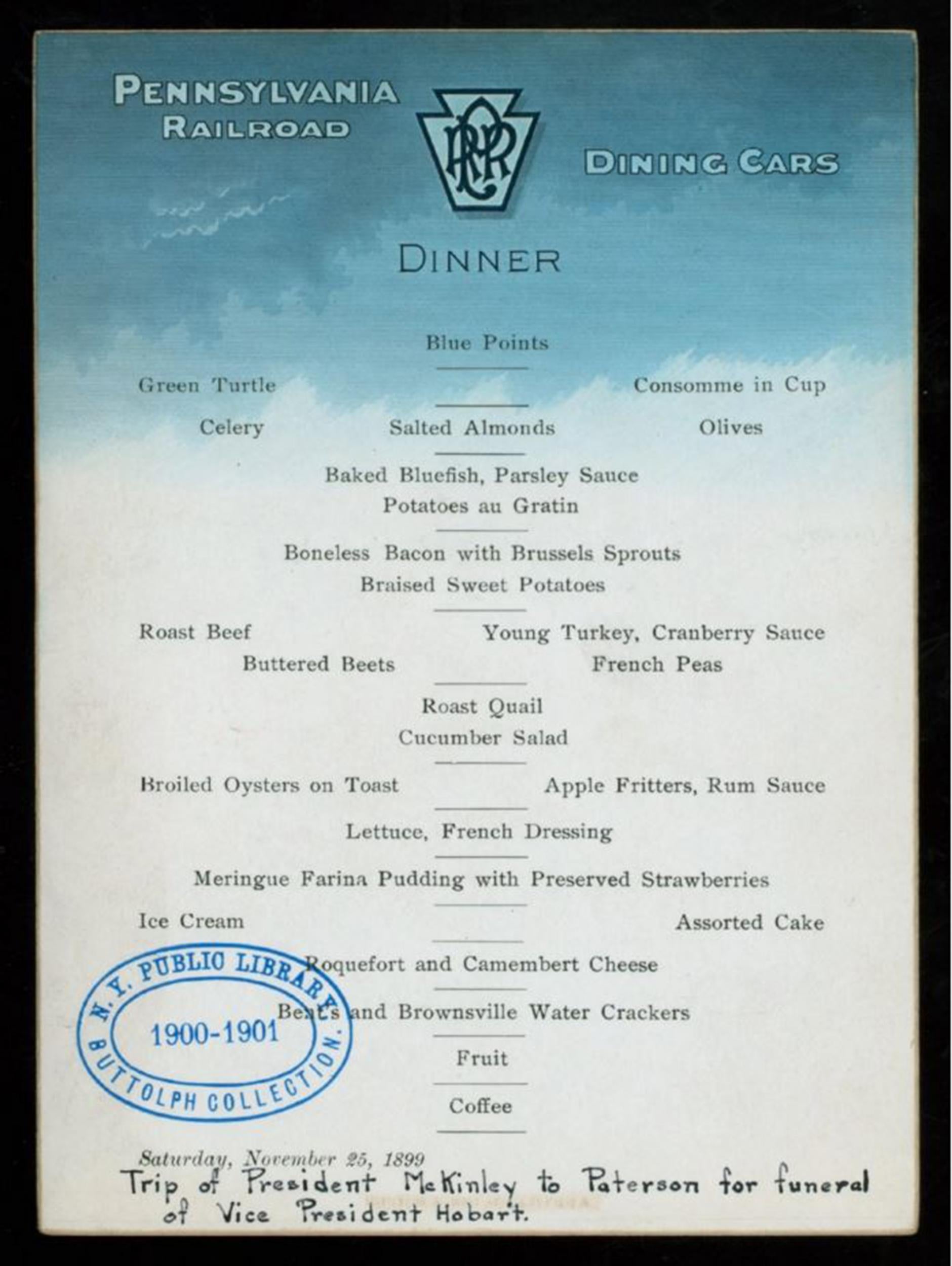
The collection includes a menu from the steamship Lusitania in September 1913, less than two years before the ship was torpedoed and sunk by Germans in one of the major events that led to U.S. entry into World War I. In addition to those good old standbys of celery and radishes, the luncheon included green corn and a fricasse of calf's feet.
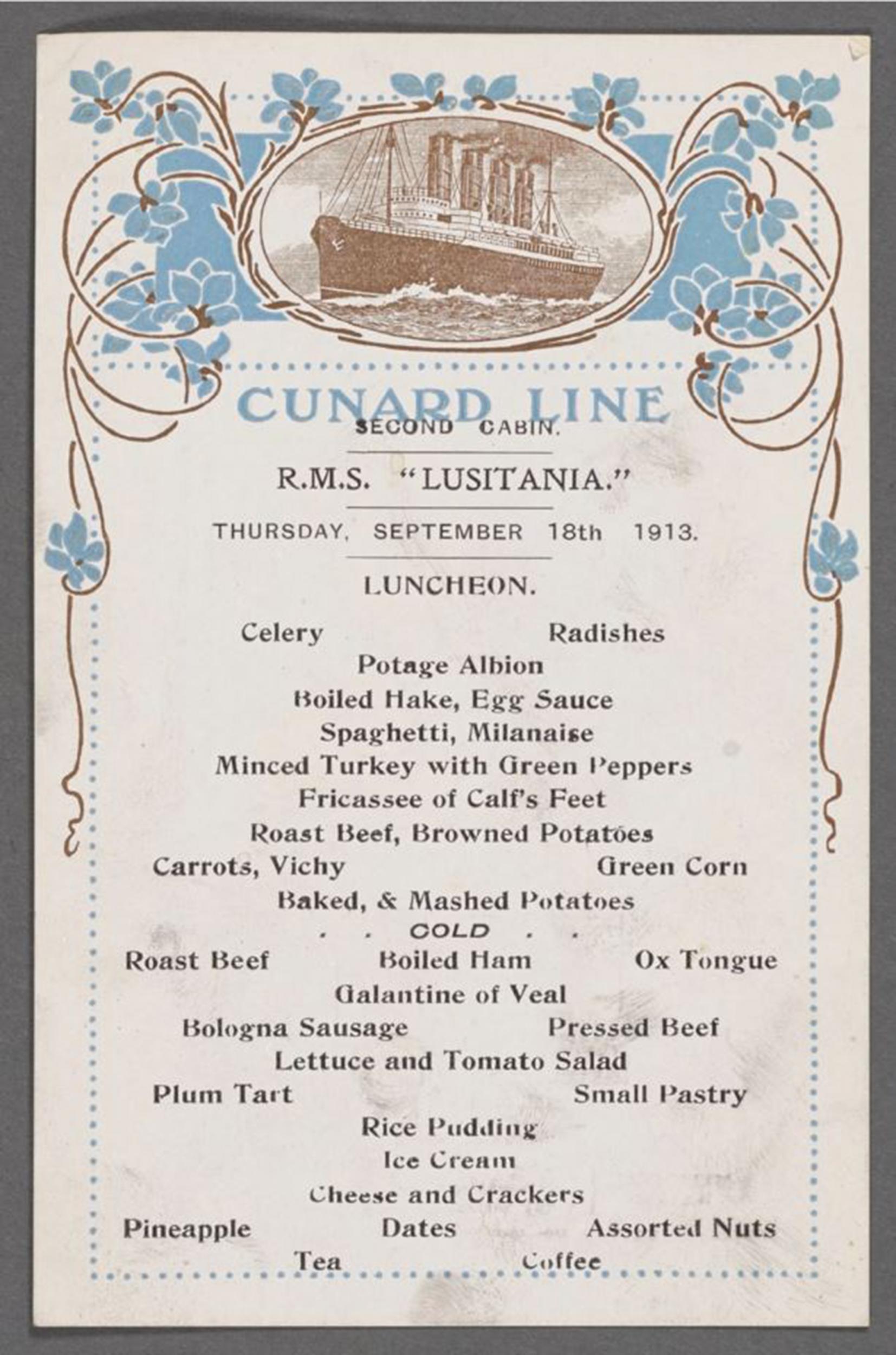
The menus paint a picture of a time that wasn't all that long ago, yet seems surprisingly different -- a time of pickled vegetables and calf's feet, and elaborate meals served on trans-Atlantic steamships. Like all good historical records, these menus make the past feel immediate, yet also remind us how it is foreign.
© Washington Post
Join our commenting forum
Join thought-provoking conversations, follow other Independent readers and see their replies
Comments